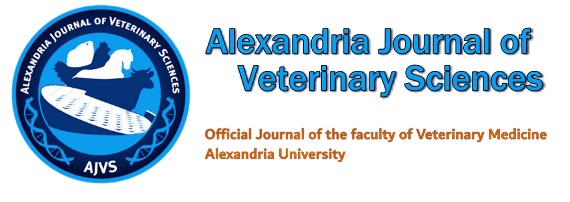
| Original Article Online Published: 10 Apr 2022 | ||||||||||||||||||||||||||||||
AJVS. 2022; 73(1): 36-51 doi: 10.5455/ajvs.98498 Black Fungi in Arabian Horses: Scanning Electron Microscopy Study of Cutaneous Equine Mucormycosis Caused by Mucor indicus for the First Time in Eastern Province, Saudi Arabia Mohammad S. Shathele Abdullah.
| ||||||||||||||||||||||||||||||
| How to Cite this Article |
| Pubmed Style Mohammad S. Shathele Abdullah. Black Fungi in Arabian Horses: Scanning Electron Microscopy Study of Cutaneous Equine Mucormycosis Caused by Mucor indicus for the First Time in Eastern Province, Saudi Arabia. AJVS. 2022; 73(1): 36-51. doi:10.5455/ajvs.98498 Web Style Mohammad S. Shathele Abdullah. Black Fungi in Arabian Horses: Scanning Electron Microscopy Study of Cutaneous Equine Mucormycosis Caused by Mucor indicus for the First Time in Eastern Province, Saudi Arabia. https://www.alexjvs.com/?mno=98498 [Access: May 06, 2025]. doi:10.5455/ajvs.98498 AMA (American Medical Association) Style Mohammad S. Shathele Abdullah. Black Fungi in Arabian Horses: Scanning Electron Microscopy Study of Cutaneous Equine Mucormycosis Caused by Mucor indicus for the First Time in Eastern Province, Saudi Arabia. AJVS. 2022; 73(1): 36-51. doi:10.5455/ajvs.98498 Vancouver/ICMJE Style Mohammad S. Shathele Abdullah. Black Fungi in Arabian Horses: Scanning Electron Microscopy Study of Cutaneous Equine Mucormycosis Caused by Mucor indicus for the First Time in Eastern Province, Saudi Arabia. AJVS. (2022), [cited May 06, 2025]; 73(1): 36-51. doi:10.5455/ajvs.98498 Harvard Style Mohammad S. Shathele Abdullah (2022) Black Fungi in Arabian Horses: Scanning Electron Microscopy Study of Cutaneous Equine Mucormycosis Caused by Mucor indicus for the First Time in Eastern Province, Saudi Arabia. AJVS, 73 (1), 36-51. doi:10.5455/ajvs.98498 Turabian Style Mohammad S. Shathele Abdullah. 2022. Black Fungi in Arabian Horses: Scanning Electron Microscopy Study of Cutaneous Equine Mucormycosis Caused by Mucor indicus for the First Time in Eastern Province, Saudi Arabia. Alexandria Journal of Veterinary Sciences, 73 (1), 36-51. doi:10.5455/ajvs.98498 Chicago Style Mohammad S. Shathele Abdullah. "Black Fungi in Arabian Horses: Scanning Electron Microscopy Study of Cutaneous Equine Mucormycosis Caused by Mucor indicus for the First Time in Eastern Province, Saudi Arabia." Alexandria Journal of Veterinary Sciences 73 (2022), 36-51. doi:10.5455/ajvs.98498 MLA (The Modern Language Association) Style Mohammad S. Shathele Abdullah. "Black Fungi in Arabian Horses: Scanning Electron Microscopy Study of Cutaneous Equine Mucormycosis Caused by Mucor indicus for the First Time in Eastern Province, Saudi Arabia." Alexandria Journal of Veterinary Sciences 73.1 (2022), 36-51. Print. doi:10.5455/ajvs.98498 APA (American Psychological Association) Style Mohammad S. Shathele Abdullah (2022) Black Fungi in Arabian Horses: Scanning Electron Microscopy Study of Cutaneous Equine Mucormycosis Caused by Mucor indicus for the First Time in Eastern Province, Saudi Arabia. Alexandria Journal of Veterinary Sciences, 73 (1), 36-51. doi:10.5455/ajvs.98498 |
Hamed Abdel tawab Samaha, Yasser Nasr Haggag, Mohammed Al sayed Nossair, Heba Mohammed Habib
AJVS. 2013; 39(1): 82-90
» Abstract
Ahmed M. EL-Gazzar, Khalid E. Ashry, Yasser S. El-Sayed
AJVS. 2014; 40(1): 29-43
» Abstract » doi: 10.5455/ajvs.48333
Sabry M. El-Bahr, Nabil M. Taha, Mahdy A. Korshom, Abd EL-Wahab A. Mandour, Mohamed A. Lebda
AJVS. 2014; 41(1): 19-27
» Abstract » doi: 10.5455/ajvs.154650
Gaber S. Abdellrazeq, Ayman M. Kamar, Samya M. El-Houshy
AJVS. 2014; 40(1): 1-15
» Abstract » doi: 10.5455/ajvs.45443
Mohamed I. El-Katcha, Mosaad A. Soltan, Hany F. El-Kanwy, EL-syaed R. kawarie
AJVS. 2014; 40(1): 95-111
» Abstract » doi: 10.5455/ajvs.48232
Fayrouz S. Naim; Samy A. Khalil and Helmy A. Torky
AJVS. 2016; 51(2): 367-373
» Abstract
Ghada H. Abdel-Rahman, Hanaa A. El-Hallawany, Dohreig RA.
AJVS. 2018; 57(2): 41-57
» Abstract » doi: 10.5455/ajvs.296364
Mohamed I. El-Katcha, Mosaad A. Soltan, Hany F. El-Kanwy, EL-syaed R. kawarie
AJVS. 2014; 40(1): 95-111
» Abstract » doi: 10.5455/ajvs.48232
Ahmed M. EL-Gazzar, Khalid E. Ashry, Yasser S. El-Sayed
AJVS. 2014; 40(1): 29-43
» Abstract » doi: 10.5455/ajvs.48333
Mostafa M. kassam, Mahmoud H. Elkammer, Ahmed S. Korittum, Ali A. Abdel-Wahed
AJVS. 2014; 40(1): 112-117
» Abstract » doi: 10.5455/ajvs.47290








